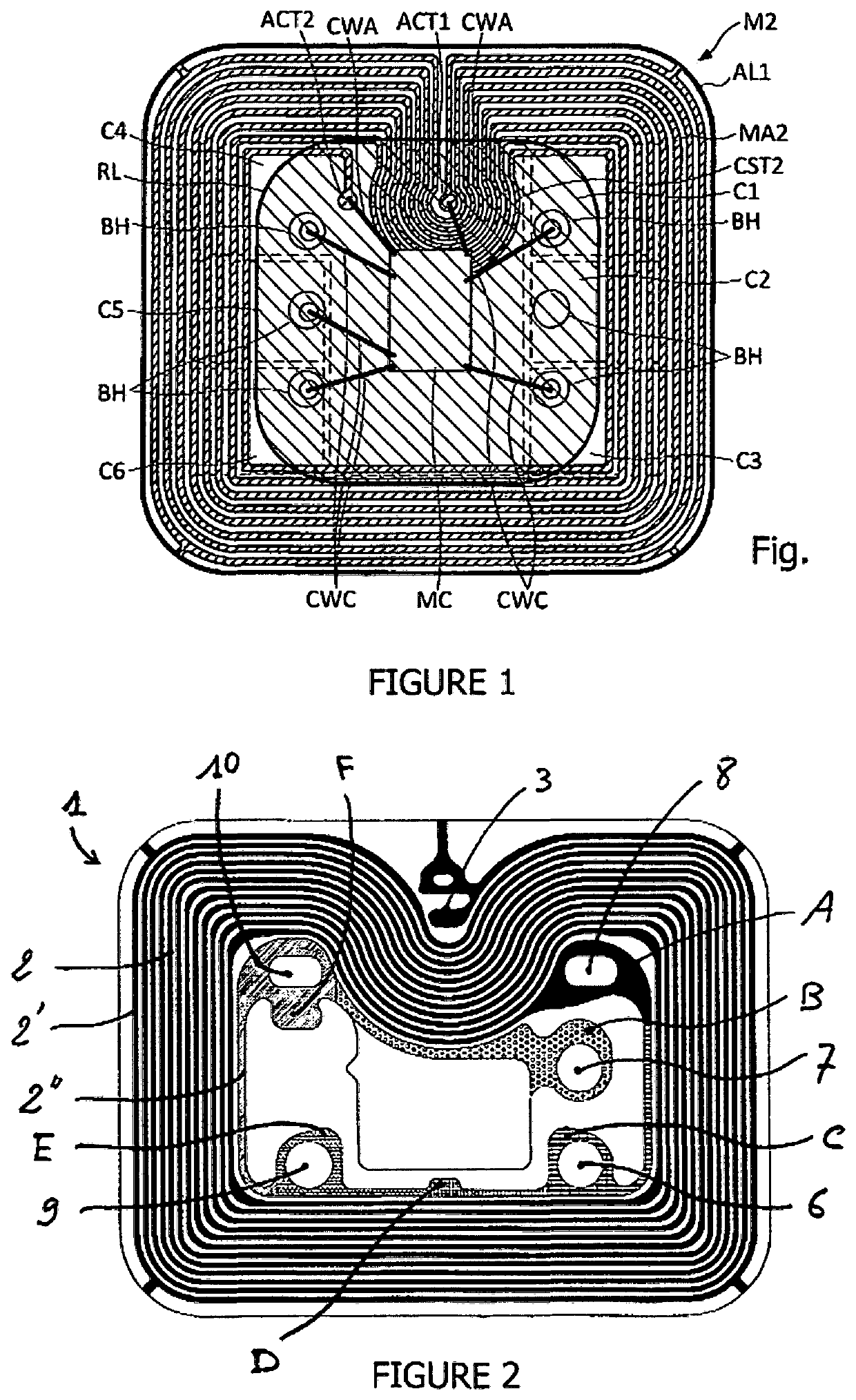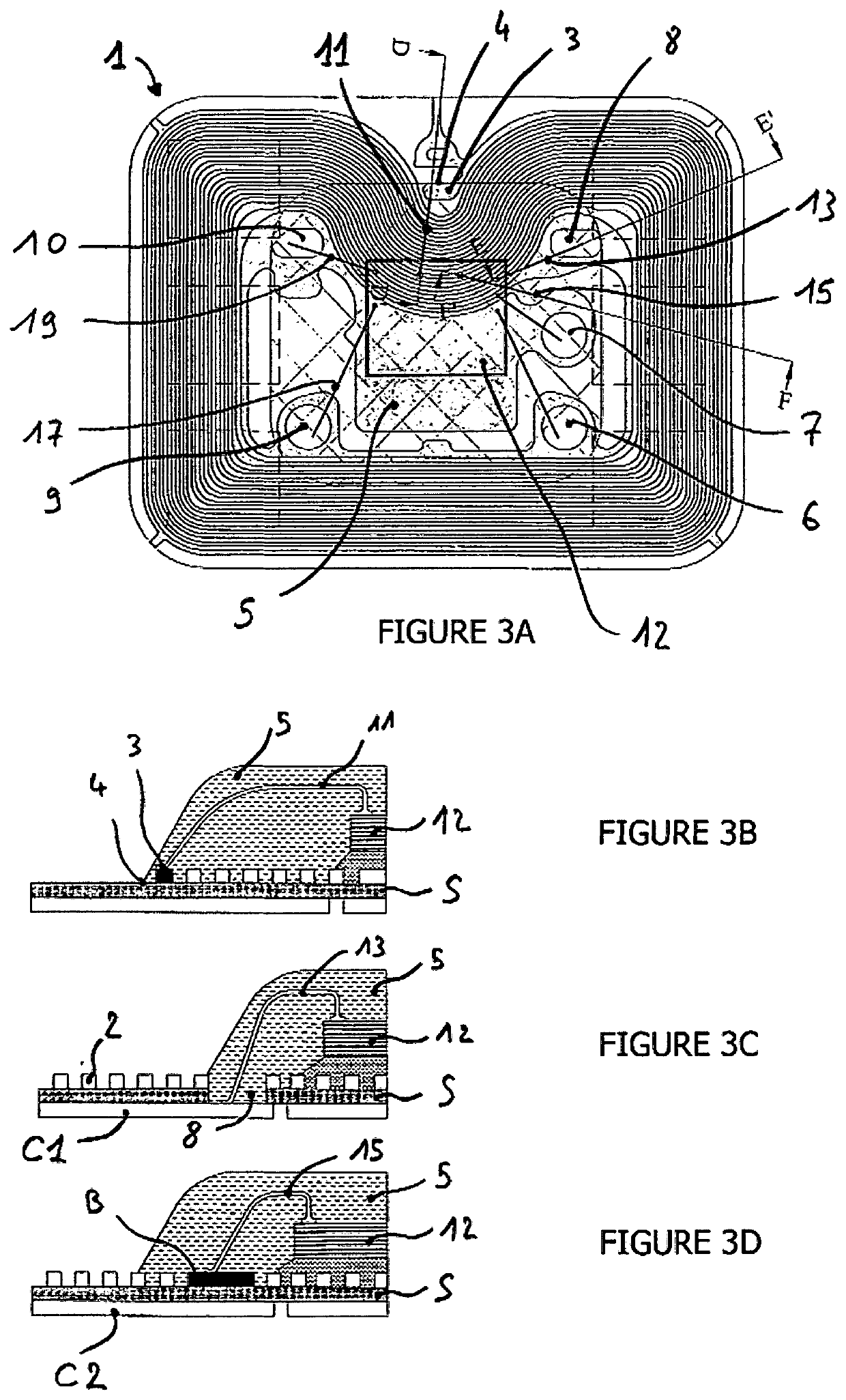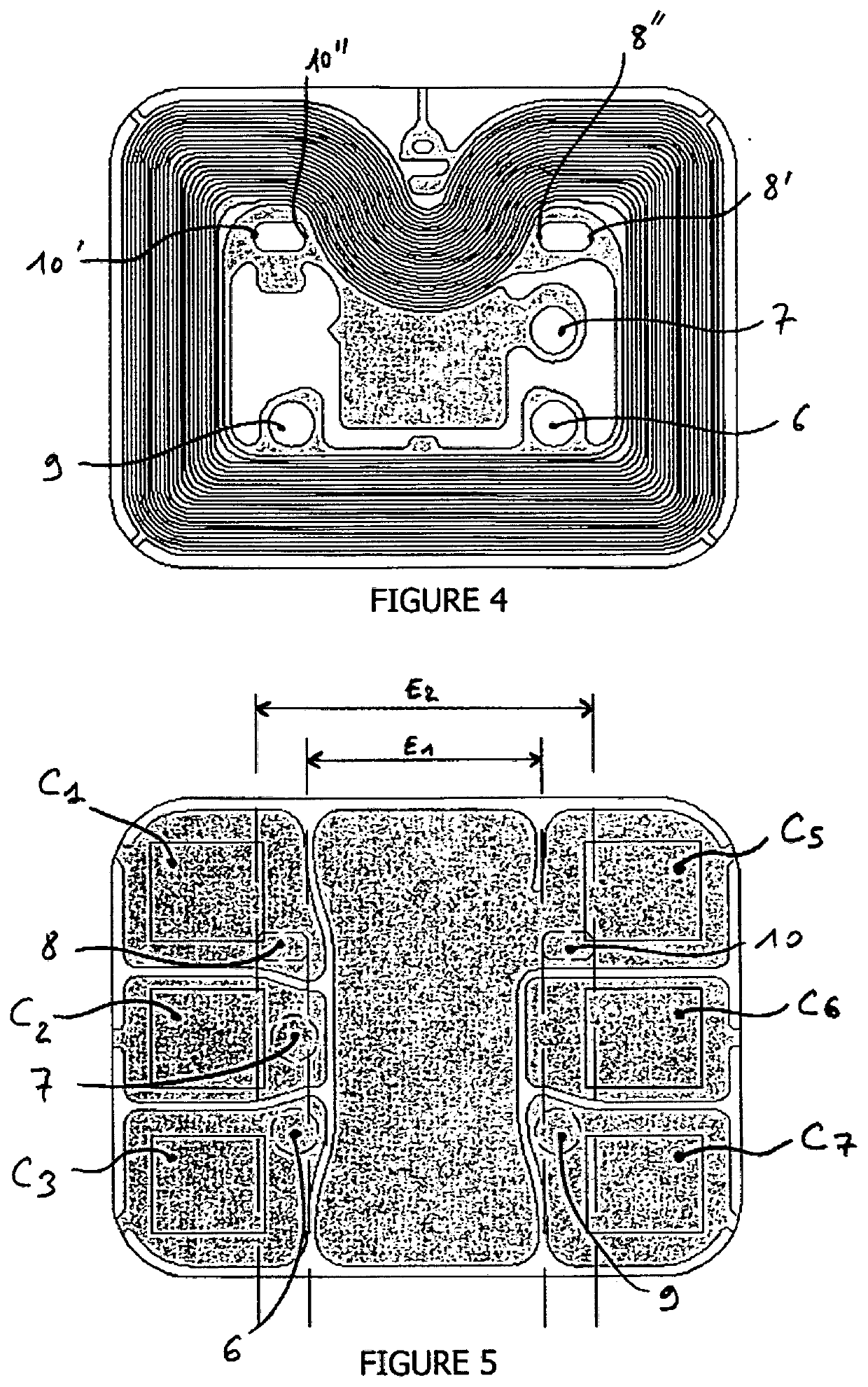Electronic module with optimized antenna for smart cards with a dual communication interfaces
a technology of smart cards and electronic modules, applied in loop antennas, printed circuit aspects, instruments, etc., can solve the problems of loss of reliability or manufacturing efficiency of antennas and modules, loss of card performance during use, and new problems, so as to increase the space available for displacing turns and inductance values
- Summary
- Abstract
- Description
- Claims
- Application Information
AI Technical Summary
Benefits of technology
Problems solved by technology
Method used
Image
Examples
Embodiment Construction
[0040]FIG. 1 corresponds to FIG. 7 of document FR 12 01866 A1 describing an electronic module for a smart card conforming to the state of the art. The module M2 includes a set of 8 turns MA2, extending between the distal end, which is the end of the external turn, denoted ACT1, and the proximal end, which is the end of the internal turn, denoted ACT2. The turns have an offset in the direction of the microelectronic chip denoted MC, and passing through the triangle formed by the distal end ACT1 and the connection wells of the metal contacts referenced C1 and C4. The distal ACT1 and proximal ACT2 ends of the antenna are clearly inside the encapsulation zone denoted RL, which corresponds to a drop of resin protecting the chip and its connection pads. The access wells BH to the contacts are aligned in two vertical rows on either side of the chip, therefore the triangle formed by ACT1 and the two upper wells BH which are closest to ACT1 is of reduced size, which reduces the width availab...
PUM
 Login to View More
Login to View More Abstract
Description
Claims
Application Information
 Login to View More
Login to View More - R&D
- Intellectual Property
- Life Sciences
- Materials
- Tech Scout
- Unparalleled Data Quality
- Higher Quality Content
- 60% Fewer Hallucinations
Browse by: Latest US Patents, China's latest patents, Technical Efficacy Thesaurus, Application Domain, Technology Topic, Popular Technical Reports.
© 2025 PatSnap. All rights reserved.Legal|Privacy policy|Modern Slavery Act Transparency Statement|Sitemap|About US| Contact US: help@patsnap.com



